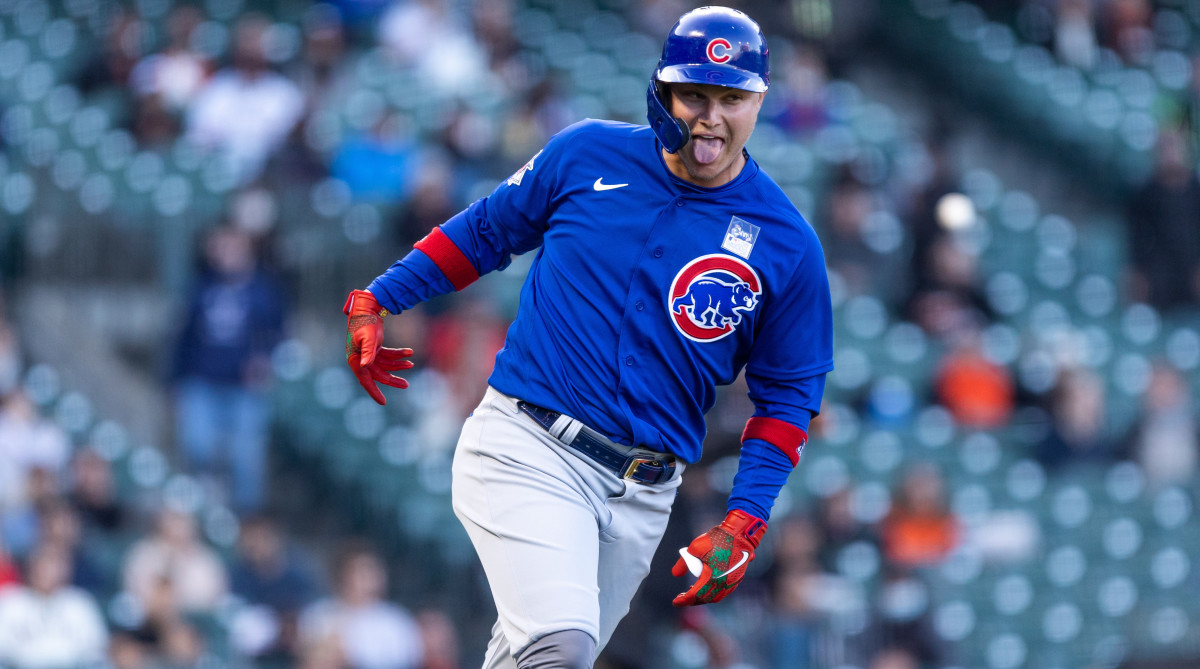Grading Atlanta's Acquisition of Joc Pederson

As the baseball world gears up for the second half, trade season has unofficially begun.
The trade deadline isn’t until July 30, but the Cubs and Braves got the wheels turning early with Chicago sending outfielder Joc Pederson to Atlanta for minor league first baseman Bryce Ball. It’s a deal that could signal major moves down the line—even if it doesn’t end up ultimately impacting the 2021 postseason race all that much.
As the players involved get acquainted with their new clubs, let’s hand out some trade grades.
Braves acquire: OF Joc Pederson
Cubs acquire: 1B Bryce Ball
Grading Atlanta’s side of the deal
The Braves are in a precarious position: their franchise cornerstone, Ronald Acuña Jr., is out for the year with a torn ACL, and they had been among the most underwhelming teams of 2021 even before his injury. Atlanta has not spent a day over .500 all year after coming one win away from winning the National League pennant last October. The Braves ranks 13th with a perfectly league-average 100 wRC+ and are 16th in team ERA (4.27), so hovering around .500 should come as no surprise.
Despite that level of persistent mediocrity, Atlanta is still within striking distance of first place in the NL East, baseball’s most middling division. The Mets are hardly juggernauts, and the Phillies, Nationals and Marlins all have their fair share of warts as well. The Braves are right to refrain from tapping out on contending this season, even if their roster remains imperfect.

So what does Pederson bring to the table? He hasn’t exactly bounced back from a down 2020 performance, posting a 95 wRC+ in nearly 300 plate appearances. He’s also not punishing right-handed pitching like he used to, and he won’t add much on the defensive end. But Pederson still drives the baseball with the best of them, with a 91.2 mph average exit velocity and a 10.2% barrel rate. A breakout is not out of the question, particularly with a hitter known for his streakiness in years past.
The cost for Pederson is relatively minimal. Ball is a towering 6’6”, 240-pound first baseman who might be better suited as a DH for an American League team. A former 24th-round pick, he hit .329/.395/.628 with 17 home runs in 62 games across rookie and low-A ball in 2019, but has struggled in high-A this season. He was ranked as Atlanta’s 11th-best prospect before the season by FanGraphs, though his path to the big leagues would likely be blocked if the Braves are able to re-sign Freddie Freeman this winter—and it appears the reigning MVP has little intention of signing elsewhere.
All in all, this was a low-risk move for the Braves that might not move the needle much over the next few months, but it addresses an area of need and has at least a small chance of improving the team’s chances at getting to the 2021 playoffs.
Grade: B
Grading Chicago’s side of the deal
The Cubs came into this season looking like they were headed to a crossroads. They’re not quite there yet, but perhaps they can see it from here.
The North Siders have dropped 19 of their last 25 games to tumble all the way to third place in the underwhelming NL Central, eight games behind the first-place Brewers. The pitching has been abysmal, while the offense has been stuck in neutral for most of the year and unable to overcome a starting rotation that ranks dead last in the majors in fWAR (1.5).
Pederson wasn’t going to solve any of those issues alone over the next two-and-a-half months, so getting a minor league bat with some promise of pop was a reasonable decision given the circumstances. Still, having your $7 million offseason acquisition shipped off after four underwhelming months is a less than ideal outcome.
The Cubs aren’t quite out of the race just yet, and the schedule between now and the July 30 trade deadline includes six games against the woeful Diamondbacks and four against the similarly free-falling Cardinals. Perhaps a hot start to the second half will get Chicago even closer, and compel the front office to look to add for a possible playoff push.
But the inverse is just as (if not more) likely to be true. Star players that once upon a time were the foundation of the Cubs’ 2016 curse-busting title team—Kris Bryant, Anthony Rizzo and Javier Baez—are all set to hit free agency this winter. If the braintrust decides this is the end of the line, those three (and perhaps more) could be next to be shipped out, which could usher in a new chapter for the franchise and the closing of this competitive window.
One trade does not a fire sale make. But in two weeks’ time, this deal could be viewed as a harbinger for the official end of the Cubs’ championship core.
Grade: B-
More MLB Coverage:
• Second-Half Preview: Decoding the Season's Mysteries
